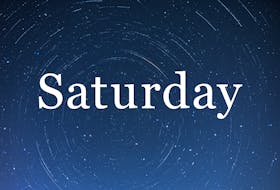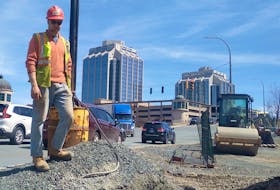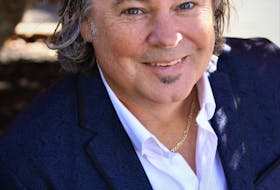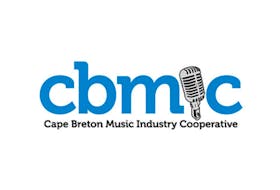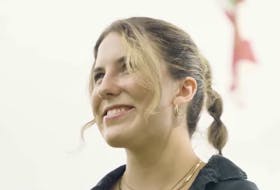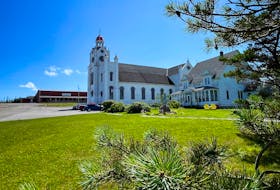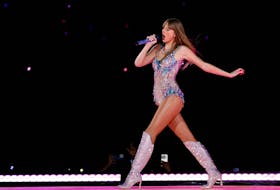Diversity and multiculturalism are imprinted in the Atlantic Canadian DNA, akin to the fossils at Joggins, N.S., or Mistaken Point, N.L.
Indigenous peoples and immigrant communities have more in common than meets the naked eye. According to 2016 census data, 91,705 immigrants and 99, 960 Indigenous peoples call Newfoundland and Labrador, Nova Scotia and Prince Edward Island home.
But, internationally, when one thinks of Canada, descriptors like “cold,” “G7 nation,” “developed” and “peaceful” are some adjectives that come to mind. Indigenous peoples are rarely associated with Canada’s image, says Casey Polonio, an engineer and a Garifuna immigrant from Belize who now lives in P.E.I.
“I knew it as a large, rich, first-world nation that loved maple syrup so much they put a leaf on the flag. I also thought of Mounties in their flat-brimmed hats and red jackets. All crude stereotypes, of course, including the images I’d formed of igloo dwellings in the far ... far north," he said.
“On the topic of race, however, it was also easy to form an image of a predominantly Caucasian population, especially in the urban areas and common suburbia."
Precious Familusi, the director of student life with Memorial University of Newfoundland, is originally from Nigeria and moved to the province from the United Kingdom in 2013 to attend high school. Newcomers to Canada don’t think of Indigenous populations until they arrive.
“You think of European settlers and the dominant Caucasian people here. You also think of diversity in terms of other ethnicities, but you don’t think of Indigenous people. The most you see about Indigenous people are in Westerns,” he said.
First encounters
For a large portion of time, Indigenous history was never addressed by mainstream society. Only recently, due to the calls for action by the Truth and Reconciliation Commission of Canada, have the atrocities of Canadian colonization been brought to the forefront.
Immigrants seldom have an opportunity to truly get to know the foundation of the place they now call home. It’s often through chance encounters they embark upon self-educating themselves about Indigenous peoples.
A radio show introduced Polonio to the darker side of Canadian history. He suspects that “fears of being offensive when bringing up culture and ethnicity among people of different demographics” is stopping conversations that need to happen.
"Truth is, though, being open and realizing that offense is usually not the intent is the only way to be educated and to educate through those conversations," he said.
Kanani Davis, a member of the Sheshatshiu Innu Nation and director of education for Innu of Labrador, attributes the lack of the Indigenous narrative on an international scale to the oppression and suppression these cultures have faced.
“For many years, we’ve been silent. Because we couldn’t speak up for ourselves, we were suppressed, we weren’t given a voice. We were looked down on. Even to this day, we feel we don’t have a voice.”
Familusi's introduction to Indigenous peoples was by sheer chance — and it came as part of a negative context.
“My first interaction, the first time I learnt about Beothuk, it was being used to insult someone. I didn’t know what it meant. It was being used in an inappropriate way,” he said.
“I Googled it. So, that’s when I first came across it. I didn’t have full knowledge until I came to university, until I started meeting Indigenous peoples. But I’ve tried to educate myself more and more. That is how I became more knowledgeable.”
Indigenous peoples, much like immigrants, often face culture shock and homesickness when they move to urban centres.
‘The other’
Being considered ‘the other’ in their own country and land has been a constant in the Indigenous narrative. Valeri Pilgrim, manager of the Aboriginal Resource Office at MUN and a proud Kablunangajuk, believes there isn't an Indigenous voice internationally.
“I’ve had conversations with international students (as part of my work), and when I tell them about the history, they’re like, ‘I didn’t expect Canada did that’, ‘I didn’t know Canada did that,’” she said.
“People see Canada as a safe, welcoming great country. But I’ve had conversations with people who are shocked. ‘Did that really happen?’ People forced into residential schooling, the abuse, it’s a part of our history and not many people know.”
While the government can create laws and rules to ameliorate the situation, it cannot legislate attitudes.
“Trudeau makes a lot of positive comments on reconciliation, instituting the United Nations Declaration on the rights of Indigenous people, but it is a very difficult sell for him," says Stephen Augustine, associate vice-president of Indigenous Affairs & Unama'ki College at Cape Breton University and a proud Mi’kmaw.
“You can’t legislate attitudes, but you can educate people and raise children to think in a certain direction. It might take longer, but you realize the value of humanistic values and principles.”
Today, First Nations, migrant Indigenous peoples that come to urban centres and immigrant populations all share space. But both demographics often operate in silos and with a lack an understanding of the common ground they share.
“I find each of the cultures were taught or brought up to question the other. All of us are a part of that colonialist education, which says, ‘this is not normal’, ‘this is normal’ and ‘you should fit within this realm of thinking and ideology' and so on. That has led to silos to be created,” said Augustine.
That's led to a lot of misinformation that holds the two demographics apart.
“A lot of the perspective we might have about [immigrants and Indigenous peoples] is based on the bias of the dominant demographic," added Familusi.
Common ground
Though these invisible walls exist, there is still a mutual understanding and respect for each other’s history, struggle, and narrative. Similarity in values — such as patience, resilience, inner strength, respect and strong familial and community ties — aside, there is a lot of common ground between the two demographics.
Indigenous peoples, much like immigrants, often face culture shock and homesickness when they move to urban centres.
“I remember a lot of noise. Culture shock happens, homesickness, missing family, missing food. I grew up on Arctic char, caribou, goose — one of my favourites. My father, when he gets the chance, he’ll send it down, but I do have to wait for it. Certain slangs and sayings — language — are only understood at home. It is missing those things,” says Pilgrim.
For Davis, the lack of understanding by mainstream society of immigrant cultures is something Indigenous peoples understand too well.
“I grew up feeling like I was a minority. I know I was a minority, but I felt belittled, excluded like I would never measure up. That’s that feeling I had. When I see an immigrant — someone who has a different culture and identity — I feel I can relate and connect,” said Davis.
The notion that intelligence can be bound by a language — in this case, English — reverberates through both communities. Many newcomers and Indigenous peoples share this struggle and barrier.
Davis says she faced culture shock when she left her community and moved to St. John's, N.L., to go to school.
“It was a culture shock because there were so many things I had to learn and be careful to do and say,” she said. "The language — the structure of our language — is very different from English, so some things may come up differently than what we would say. So I had to be very careful.”
Indigenous peoples and immigrants also share the experience of losing one’s uniqueness and being forced to assimilate and integrate into mainstream society.
“Losing the home you once had. Having to adapt the prevailing cultures that are not your own. Being targets of prejudice. Being called out for being different,” were all commonalities Polonio found between the two demographics.
Bridging the gap
Augustine says the reaction Indigenous people and immigrants get is not always welcoming. There was a sense, he said, of “keeping us away from them.”
Familusi believes it's important for both groups to work as allies. “As someone coming to Canada, I feel a lot of international people feel it’s none of their business, but we should be fighting for those folks as well because they’re facing the same social injustice we are. We are facing such similar challenges,” he said.
Bringing cohesiveness to these two demographics would seem to help build a more cohesive Canada, said Pilgrim.
“I think we can find areas to come together and learn from one another. Indigenous and immigrant communities are huge," she said, suggesting something as simple as sharing food from different cultures could be a good first step.
“I think there would be an appreciation if this were to happen. It would be an amazing thing to see.”
Diversity trainer and owner of Mind The Gap Consulting, Dr. Willow J. Anderson says local friendship centres is one way to reach that point.
“Reaching out to local friendship centres is a great way for immigrants to Canada to learn about Indigenous peoples in Canada,” Anderson added.
Across Atlantic Canada, numerous organizations are working to implement calls for action #93 and #94 of the Truth and Reconciliation Commission of Canada, and there are some indications the Government of Newfoundland and Labrador is just about to unveil new initiatives to take these very calls for action ahead.

